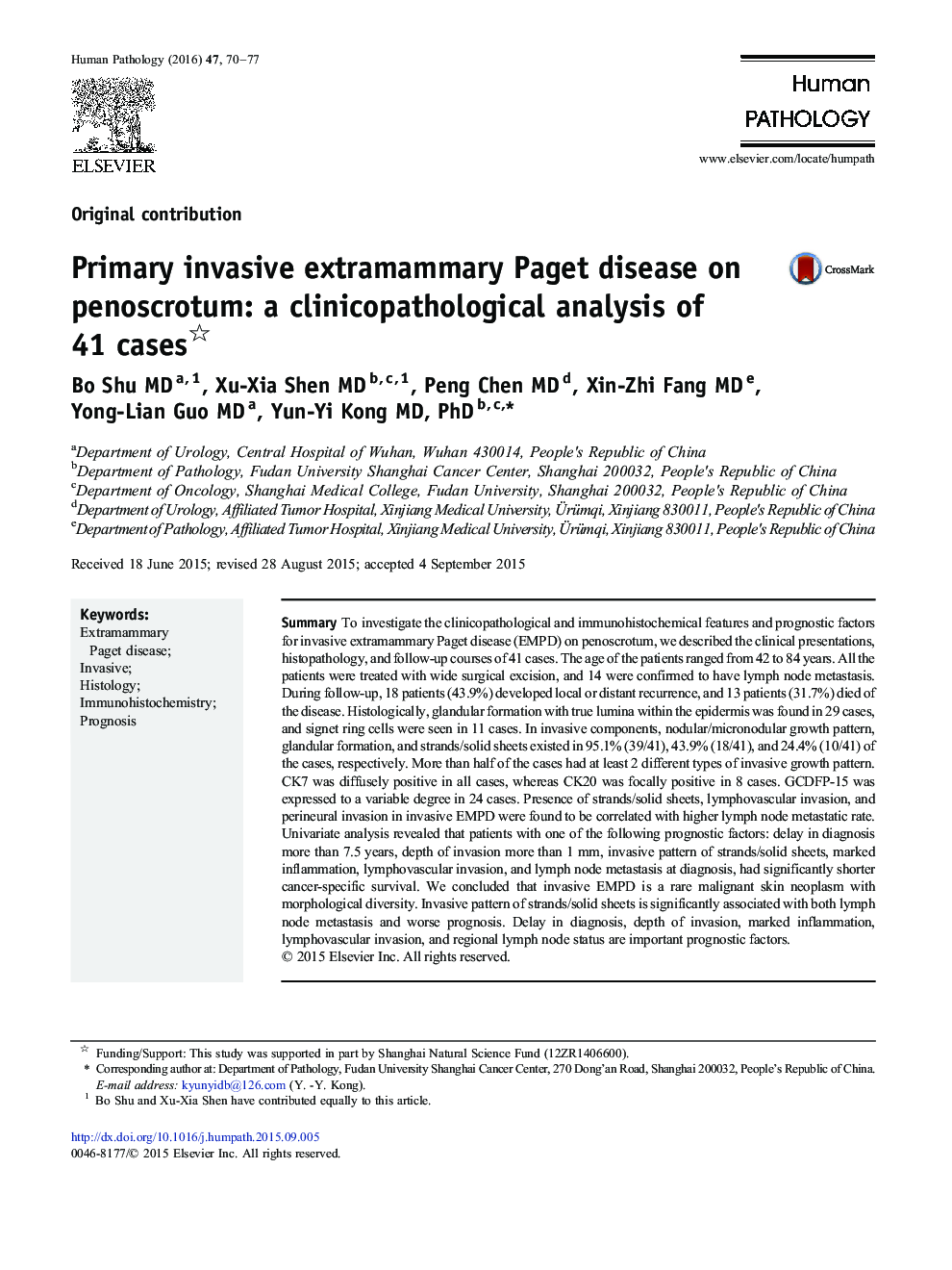| کد مقاله | کد نشریه | سال انتشار | مقاله انگلیسی | نسخه تمام متن |
|---|---|---|---|---|
| 4132490 | 1271384 | 2016 | 8 صفحه PDF | دانلود رایگان |
SummaryTo investigate the clinicopathological and immunohistochemical features and prognostic factors for invasive extramammary Paget disease (EMPD) on penoscrotum, we described the clinical presentations, histopathology, and follow-up courses of 41 cases. The age of the patients ranged from 42 to 84 years. All the patients were treated with wide surgical excision, and 14 were confirmed to have lymph node metastasis. During follow-up, 18 patients (43.9%) developed local or distant recurrence, and 13 patients (31.7%) died of the disease. Histologically, glandular formation with true lumina within the epidermis was found in 29 cases, and signet ring cells were seen in 11 cases. In invasive components, nodular/micronodular growth pattern, glandular formation, and strands/solid sheets existed in 95.1% (39/41), 43.9% (18/41), and 24.4% (10/41) of the cases, respectively. More than half of the cases had at least 2 different types of invasive growth pattern. CK7 was diffusely positive in all cases, whereas CK20 was focally positive in 8 cases. GCDFP-15 was expressed to a variable degree in 24 cases. Presence of strands/solid sheets, lymphovascular invasion, and perineural invasion in invasive EMPD were found to be correlated with higher lymph node metastatic rate. Univariate analysis revealed that patients with one of the following prognostic factors: delay in diagnosis more than 7.5 years, depth of invasion more than 1 mm, invasive pattern of strands/solid sheets, marked inflammation, lymphovascular invasion, and lymph node metastasis at diagnosis, had significantly shorter cancer-specific survival. We concluded that invasive EMPD is a rare malignant skin neoplasm with morphological diversity. Invasive pattern of strands/solid sheets is significantly associated with both lymph node metastasis and worse prognosis. Delay in diagnosis, depth of invasion, marked inflammation, lymphovascular invasion, and regional lymph node status are important prognostic factors.
Journal: Human Pathology - Volume 47, Issue 1, January 2016, Pages 70–77
